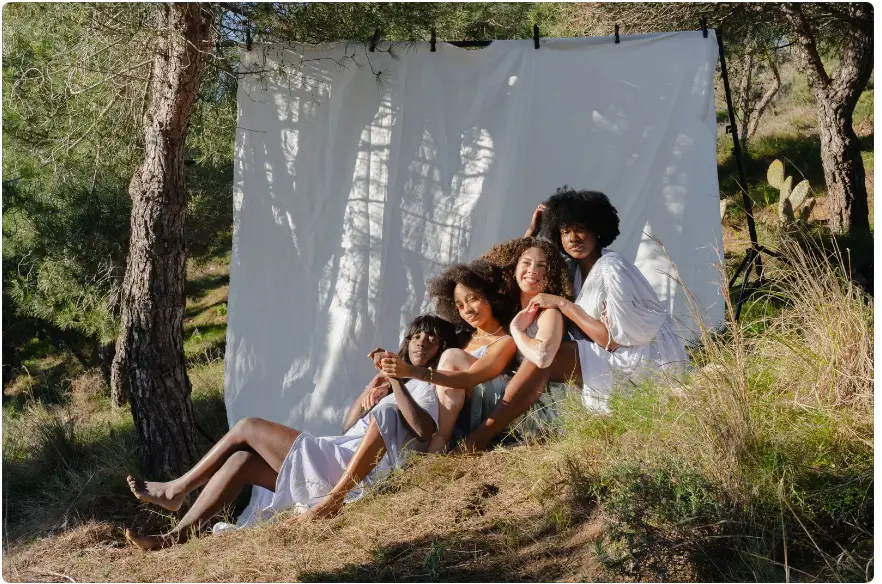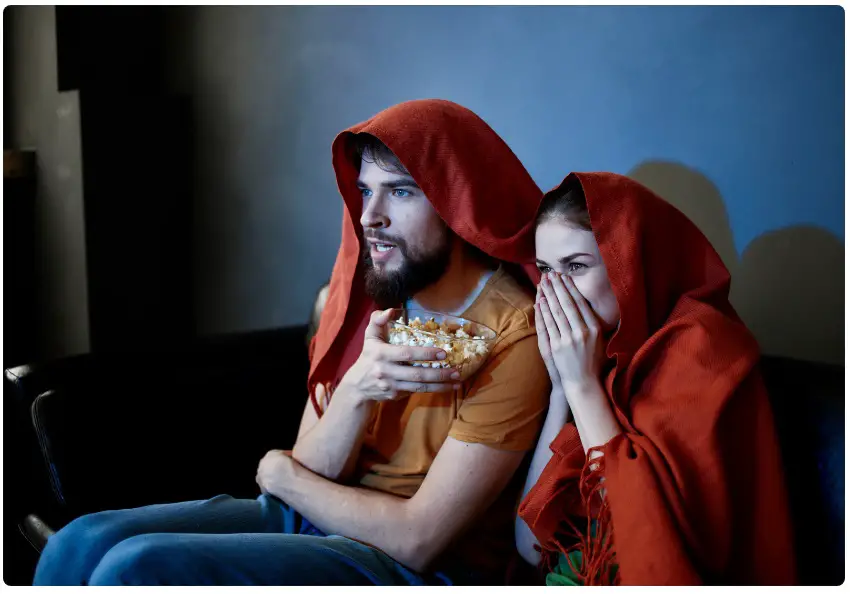Ah, reality television – the guilty pleasure we just can’t seem to quit. It’s a phenomenon that has taken the world by storm, and we can’t help but be captivated by the drama, the glamour, and the seemingly unscripted moments that leave us gasping for more. So, how does reality television work? What goes on behind the scenes to create such addictive and often controversial content? Grab a cup of tea and let’s dive into the nitty-gritty of reality TV, from casting to editing, and all the juicy bits in between.
Contents
1. The Casting Couch: Finding the Perfect Mixture of Personalities
Open casting calls: Producers search high and low for unique individuals
Reality TV casting often begins with open casting calls, where producers search far and wide for people with larger-than-life personalities, interesting backstories, or unique talents. During these auditions, applicants showcase their individuality and flair in hopes of catching the eyes of producers. Many shows also use talent scouts to track down potential stars or hold special events where potential contestants can be discovered.
Psychological tests: Ensuring contestants can handle the pressure
Before joining a reality TV show, potential contestants often undergo rigorous psychological testing to ensure they can handle the emotional and mental strain of being in the public eye. This process helps producers weed out those who may not be able to cope with the unique pressures of reality TV, such as isolation from loved ones, constant scrutiny, and potential conflict with other cast members.
The perfect blend: Balancing diverse personalities for maximum drama
Casting directors aim to create a diverse mix of personalities that will generate conflict, tension, and emotional connections, ultimately making for great television. The perfect cast often includes a mix of strong personalities, likeable underdogs, and polarizing characters that create a dynamic environment ripe for drama.

2. The Art of the Story: Crafting a Narrative
Pre-production planning: Setting the stage for drama
Before the cameras start rolling, reality TV producers and writers often develop a rough outline of the show’s structure and potential storylines. They identify key moments and conflicts they’d like to see unfold and brainstorm ways to create a conducive environment for such drama. Although reality TV isn’t scripted in the traditional sense, pre-production planning sets the stage for captivating and engaging content.
Producers’ influence: Guiding the cast to create captivating storylines
While reality TV shows are unscripted, producers often guide the cast towards certain behaviors or situations that align with their vision for the show. They may encourage contestants to confront one another, reveal personal secrets, or engage in risky activities to create high-stakes drama. Through subtle manipulation and direction, producers coax the cast into providing the raw material for compelling television.
Manipulation and editing: How reality TV is shaped behind the scenes
Once filming is complete, editors work their magic to turn hundreds of hours of raw footage into cohesive, engaging narratives. They selectively piece together scenes to emphasize conflict, amplify emotional moments, and create suspense. In some cases, editing can even be used to create misleading or false narratives by taking moments out of context or splicing together unrelated scenes. This manipulation is a key aspect of how reality television works to captivate viewers.

3. Keeping Up Appearances: The Role of Image in Reality TV
The power of wardrobe and makeup: Crafting characters through style
In reality TV, image is everything. Wardrobe and makeup play a significant role in crafting the personas of reality show participants. Stylists carefully curate the cast’s outfits to reflect their character archetypes or to create a specific atmosphere. For instance, a “villain” may be dressed in darker colors, while the “hero” is outfitted in lighter tones. Makeup artists also use their skills to enhance or alter the cast’s appearance, ensuring they look their best (or worst) when facing the cameras.
Location, location, location: Setting the stage for a luxurious fantasy
The setting of a reality TV show can be just as important as the cast members themselves. Lavish homes, exotic locales, and upscale venues create an aspirational fantasy world that viewers can’t resist. These luxurious environments heighten the appeal of reality TV, offering viewers an escape from their everyday lives and a taste of the high life they can only dream of.
Social media and branding: How reality stars capitalize on their fame
Reality TV participants often use their newfound fame to build personal brands and cash in on lucrative endorsement deals, product launches, or social media partnerships. This symbiotic relationship between reality TV and social media allows cast members to extend their 15 minutes of fame, while also providing additional marketing and exposure for the show itself. In some cases, reality stars even go on to create their own spin-off shows or forge successful careers in entertainment or business.
4. The Reality TV Formula: Breaking Down the Ingredients
High stakes: Competitions and challenges to keep viewers hooked
One key aspect of how reality television works is the inclusion of high-stakes competitions and challenges. Whether it’s a cooking show, a singing competition, or a race around the world, these contests keep viewers on the edge of their seats and rooting for their favorite participants. The competitive nature of these shows creates drama, suspense, and emotional investment, making it difficult for viewers to look away.
Emotional vulnerability: Connecting with the audience on a deeper level
Reality TV shows often encourage participants to share their personal stories, struggles, and emotions with the audience. This vulnerability allows viewers to form a deeper connection with the cast members and become more invested in their journeys. Emotional moments, such as tearful confessions or heartfelt displays of affection, can create water-cooler moments and keep viewers coming back for more.
The villain, the hero, and everyone in between: Archetypes in reality TV
Reality TV thrives on well-defined character archetypes. The villain, the hero, the underdog, and the comic relief are just a few examples of the roles that cast members often fill. By clearly defining these roles, producers create a familiar structure that viewers can easily understand and engage with. These archetypes drive the narrative and create memorable, love-to-hate or love-to-love characters that keep viewers tuning in.
FAQs:
Q: How does reality television work when it comes to casting? A: Producers scout for potential contestants through open casting calls, background checks, and psychological tests. They aim to create a diverse blend of personalities for maximum drama and entertainment.
Q: Are reality TV shows scripted? A: While not entirely scripted, reality TV producers often guide the cast in certain directions to create storylines that align with their vision. Editing and manipulation also play a significant role in shaping the final product.
Q: How does reality television work in terms of generating revenue? A: Reality TV generates revenue through advertising, product placements, and brand partnerships. Cast members also benefit from increased exposure and can monetize their fame through endorsements and social media.
Q: What impact does reality television have on society? A: Reality TV has been criticized for promoting unrealistic beauty standards, unhealthy competition, and negative behavior. However, some argue that it provides an escape from everyday life and can even spark important conversations about social issues.
5. Reality Television: A Global Phenomenon
Cross-cultural appeal: Why reality TV resonates around the world
Reality TV has become a global phenomenon, with formats and shows being adapted and produced for audiences in various countries. The cross-cultural appeal of reality TV stems from its relatability and ability to tap into universal emotions and experiences. Whether it’s the pursuit of love, the thrill of competition, or the desire for self-improvement, reality TV transcends cultural barriers and connects with viewers on a deeper level.
Localization and adaptation: Tailoring reality TV for diverse audiences
When reality TV formats are adapted for different countries, producers often tailor the content to suit local tastes and sensibilities. This localization process can include tweaks to the show’s format, casting choices that reflect the local population, or incorporating local customs and traditions. By adapting reality TV to cater to diverse audiences, producers can maximize the show’s appeal and ensure that it resonates with viewers from all walks of life.
6. The Dark Side of Reality Television
Exploitation and manipulation: The ethical dilemmas of reality TV
Despite its popularity, reality TV has been criticized for exploiting and manipulating its participants. Producers have been accused of pushing cast members to their emotional and physical limits, staging situations to create drama, or editing footage in misleading ways. These ethical dilemmas have led some to question whether reality TV is a responsible form of entertainment.
The impact on mental health: Coping with fame and scrutiny
Participating in a reality TV show can take a significant toll on the mental health of cast members. The sudden thrust into the spotlight, combined with the intense scrutiny of their personal lives, can be overwhelming and challenging to navigate. In some cases, this pressure has led to lasting emotional struggles or even tragic outcomes. As a result, there is a growing call for greater support and resources for reality TV participants, both during and after their time on the show.
Conclusion:
At its core, reality television is a carefully crafted illusion, expertly designed to keep viewers glued to their screens. So, how does reality television work? It starts with finding the perfect cast, creating intriguing storylines, and playing up the drama through editing and manipulation. Throw in a healthy dose of competition, emotional vulnerability, and the occasional villain, and you’ve got yourself a reality TV show that’s hard to resist.
As viewers, it’s important to remember that while reality TV offers a glimpse into the lives of others, it doesn’t always reflect the whole truth. It’s also crucial to consider the ethical implications and potential consequences for participants. So, enjoy the guilty pleasure, but don’t forget to take it all with a grain of salt.





